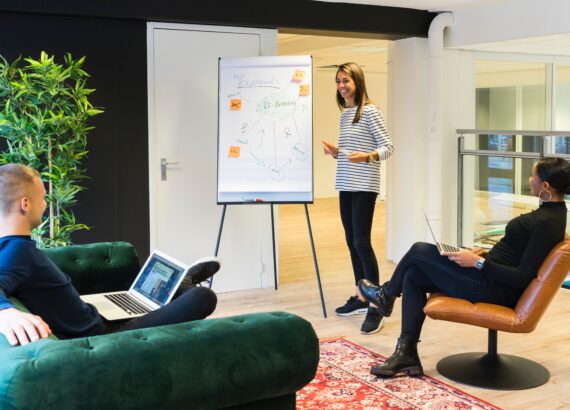Dogs and kids can give one another a great deal of joy. However, if you’re not monitoring the situation, things can get dangerous. Your dog needs the chance to get used to kids early and probably require a lot of monitoring. We were really lucky with our dogs as they are both very tolerant with the kids. I remember when Noah was a baby, he would pull clumps of hair from Rambo and he never battered an eyelid! It is really important to train your dog with the children.
Start Early
Socialize your puppy to children. Start at around eight weeks, if at all possible. Try to expose the puppy to children who don’t scream or shriek when excited. If that’s not possible, be there with your pup and if they return to you with their head down, be ready to ask the children to leave the dog alone; they need a break.
You can train an older dog to be calm around children. Even older dogs that have never been exposed to kids can learn to love them. Make sure to provide plenty of treats, and if the child is willing, have them reward the dog for good behavior. If your dog sits on your command, give them verbal praise.
If the dog sits when the child commands it, have the child give the food. We love the Forthglade treats, the dogs love them too! Once your dog starts to associate good behaviors around children with food from children, you can step back and let your dog have closer contact with an older child.
Get Low
Dogs love to play with those on their eye level. Unfortunately, a tag’s dog method is to dip low on their front paws, wag their tails, and pounce. Get on the floor with your dog and work with them when they play bow. If you’re both on the floor, encourage your dog to come forward out of a play bow and sit for a treat.
Get your dog accustomed to being on an eye-level with little humans and not getting over-excited. It’s easy for a dog to jump forward happily and completely plow over a child, so moving from a play bow into a patient sitting position is a great training choice.
Break the Jumping Habit
As noted above, dogs love to be on an eye-level with others. If your dog is a jumper, you may need to back away or leave the room when they jump on you. Bringing up a knee will work to train your dog not to jump on you, but it’s unlikely to work on others. Ignore them entirely until they sit, then go crazy with the verbal praise until jumping turns into a waste of energy for your dog.
Don’t Hold Your Dog
If your dog is small, holding him will put him in a defensive mindset. If you encourage a child to come up and pet them from that position, you’re encouraging them to act protectively and possibly aggressively. Set the pup down, and if they cower or act afraid, try again later.
On Leash
Kids who aren’t trained or aware of how dogs behave can hurt your pet, and vice versa. Never turn your back on your dog when they’re close to a child you don’t know. If you’re walking your dog on a leash, your dog may feel that they’re protecting or guarding you. Should a child run-up to the dog, stop walking, and tell the child to wait.
Hopefully, an adult with a connection to the child will make their presence known. If not, get down on the path with your dog and encourage them to sit. Check-in with your dog to make sure they’re calm, and if the child is quiet, invite the child forward.
Part of training a dog for contact with children is training the child.
If a child runs up to your dog shrieking, immediately protect your dog because they may well feel threatened and act aggressively. Do what it takes to keep the child away from the dog and to quiet them. Even if the child is excited, a scream is a scream. Additionally, children need to learn that it’s never a good idea to run up to a strange dog.
Crate Train Your Pup
If you have children and need to train a new dog or puppy to be a good member of the family, invest in a crate, and make sure the sides are covered. Your new dog must have a place of their own to take a break, and if you’re in the process of housebreaking your new dog, a crate and appropriate training are critical.
Make sure that you don’t let the dog out of the crate and ignore them. Dogs are creatures of habit and easy to train with careful observation. Guide your dogs to build positive habits from the time you touch the latch.
When your dog comes out of the crate, take them to the necessary bathroom spot. Eventually, they will head there on their own. Once that’s a solid habit, your children may let the pup out of the crate and guide them to the yard.
Finally, load the crate with comforts if you have a pup and got the chance to get close to littermates or siblings, pet those dogs with an old tee shirt.
Transfer the scent to you by putting on the tee-shirt. Hold your new pup while wearing their scent so your pup can bond with you and associate your scent as a pack member. Let your kids put on the tee-shirt, too, to boost this transfer.
Conclusion
Never leave your dog unattended with a child, particularly a child you’re not familiar with. Dogs play rough, and kids can hurt a dog without realizing it. Even a responsible child can appear threatening to a dog. Monitor, observe and socialize early if at all possible.






